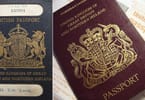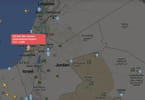Three months after the new Kenya Civil Aviation Regulations (KCAR) were bulldozed over the objections from stakeholders, the first cracks appear in their implementation. Stakeholders’ fears are being vindicated as hapless Kenya Civil Aviation Authority (KCAA) staff are overwhelmed trying to enforce the overly detailed and disorganized KCARs.
Formerly routine paperwork is now being subjected to in depth scrutiny and unnecessary red tape, as overburdened inspectors and employees are trying to adhere to performance contracts and make no mistakes. As warned by stakeholders, the micro-control mechanisms that have been imposed on Kenyan aviation with 1400 pages of rules and penalties are leading to a paper knot. All aspects of aviation in Kenya have been criminalized, from failure to renew a license to forgetting to advise a change of address, to not fencing even the smallest bush airstrip. Many components of aviation have been regulated with a “one-size-fits-all” system, while others that should have been regulated have not been addressed at all.
KCAA staff who are burdened with implementing the regulations have resorted to the “CYA (cover your own a**) Principle” and are interpreting every rule and definition to the letter, avoiding any semblance of lateral thinking. As a result, even the most routine applications for any sort of license, permit or unusual aviation activity are being shunted around from department to department since now several sections of KCAA must give their OK before a piece of paper is granted. The wheel is being re-invented on routine matters that had been in force in Kenya for many years.
Operators and pilots are unanimous that the bureaucracy created by KCAA is not only unnecessary, but fundamentally fallacious and counter-productive. And that in a day and age where many formal organizations like the Federal Aviation Administration and the European Aviation Safety Agency are offering rewards to those who point out ways to reduce paperwork. Unfortunately, the Kenyans fell into the same trap that slowed down economic growth of countries like India and Egypt for a hundred years, before leaders from those countries realized that “micro-control” of all human activities is counter-productive and hinders development. India, China, Egypt, Russia and many other countries in which centralized control was practiced before, have all relaxed their systems and are now experiencing above average economic growth. Kenya is “on the other bus” as their bureaucrats think they are smart enough to be able to foresee all eventualities and have a rule in place for everything.
Kenyan aviation stakeholders have gone to the High Court over the KCARs, pointing out that operators and pilots are not “against Regulations per se” but that the regulations must be reasonable and not damage their livelihood and injure the economy. KCAA, in its defense, keeps pointing to the International Civil Aviation Organization (ICAO) as a culprit, saying that Kenya must adhere to international regulations. Stakeholders have pointed out many times that ICAO regulations are intended to guide primarily international commercial aviation, and domestic operations for commercial aircraft weighing more than 5700 kg AUW. Yet, KCAA applies the stringent regulations intended for airliners to even the smallest airplane or airfield.
For the last three years, air operators had objected to the KCAR proposals, pointing out that they will lead to bureaucratic “gridlock.” KCAA staff are blaming their current ”difficulties on “teething problems.”
Further, in a bout of chauvinism, some KCAA seniors are also quoted as saying that “only the [expletive] from the Aero Club are complaining.” Talk about being out of touch. Stakeholders maintain that to enforce the new regulations as written, an army of KCAA inspectors will have to be engaged and trained. They contend that these inspectors will have to be paid by the stakeholders who did not ask for the KCARs and on whom they were imposed with only “token” consultation.
Meanwhile, it is perhaps not a coincidence that KCAA on October 28 unveiled a proposal to revise the system of charging air navigation fees. KCAA needs money, that is clear, and it needs it because it is operated on a so-called “cost recovery basis,” without an upper limit or any accountability to those who have to pay. This was not new as the KCAA had already attempted to introduce more fees in 2002 and again in 2007.
The new ANS system, derived from the ICAO method of charging in accordance with a complex formula based on aircraft weight and distance flown by the aircraft in the FIR, is considered more fair than the present method of collection in which only those who fly into or out of an airport with a control tower and AIS office are charged. Aircraft flying into or out of unmanned aerodromes essentially pay no “nav fees” because there is no way for KCAA to collect. Of course, this also brings up the issue of “navigation fees” for aircraft flying in accordance with Visual Flight Rules (VFR). The vexing question is: Who is doing the navigating – the pilot or KCAA?
The KCAA proposal unveiled at the workshop contains a “special deal” for aircraft weighing less than 2500 kg. Such smaller, mostly “private” aircraft would be subjected to a yearly fee of KShs. 50,000 rather than the weight-distance formula. The annual fee is to be paid by all aircraft at C of A renewal time. Whilst in principle this would simplify things for a lot for private operators who do not have staff to run around and do flight planning and pay ad hoc fees for them, the Aero Club of East Africa questioned the amount. At present rates of Shs. 1200 (approx.) per flight plan, a pilot would have to undertake some 40 + cross-country flights a year to reach a figure of 50000 shillings. Most pilots of small aircraft fly much less than that. The ACEA has requested the KCAA to lower the figure from 50,000 to what KCAA proposed a year ago: KShs. 30,000. In many countries, nav fees are either not charged at all (e.g. USA) or small aircraft are not charged. This is part of an effort by those governments to promote aviation and protect the grassroots of flying, without which aviation would be dead. KCAA has yet to learn that.
Tanzania introduced the weight and distance formula in July 2007, but in a discriminatory fashion, it only applies to foreign-registered aircraft. This, of course, is contrary to ICAO Standards & Recommended Practices (SARPS). It also led to countless arguments at the fee collection points as the Tanzania Civil Aviation Authority attendants, not well-versed in algebra (the formula requires derivation of a square root. Remember how to do that by hand?) tried to calculate the applicable fee. Hopefully this scenario will be avoided in Kenya where KCAA stations are now computerized.
In that context it is also hoped that the collection of KCAA fees will soon be taken away from the Kenya Revenue Authority and located where it belongs – the KCAA. The savings in staff and hassle would be immeasurable.
Under the new KCAA proposals, aircraft above an AUW of 2500 kg would be charged in accordance with the weight-distance formula and it is not clear how payment would be enforced on aircraft flying between unmanned airports where collection points are not in position, unless of course KCAA or KRA places an employee at every one of 650 airfields in Kenya. That it has promised to do in its new KCAR Security Regulations which stipulate that ALL airfields must have a Manager, Security Manager, etc. Those who require a copy of the KCAA Proposals (as a pdf file), please contact the chairman of the Aero Club of East Africa at [email protected] or [email protected]
There are similar complaints from other parts of Eastern Africa, including from Uganda, about what more outspoken aviators castigate their regulators for “institutional arrogance, incompetence and incomprehension” A big ooops! And much blame must go to the FAA consultants who were pushing for the revision of the former regulatory framework, but who could obviously not understand one thing the East African aviators told them time and again during the consultative stages in regard of light aircraft operations under VFR rules and how their input would potentially shut this element of aviation down. Oooops again!
((US$1.00=78.00 Kenya shillings)
WHAT TO TAKE AWAY FROM THIS ARTICLE:
- All aspects of aviation in Kenya have been criminalized, from failure to renew a license to forgetting to advise a change of address, to not fencing even the smallest bush airstrip.
- As a result, even the most routine applications for any sort of license, permit or unusual aviation activity are being shunted around from department to department since now several sections of KCAA must give their OK before a piece of paper is granted.
- And that in a day and age where many formal organizations like the Federal Aviation Administration and the European Aviation Safety Agency are offering rewards to those who point out ways to reduce paperwork.






















